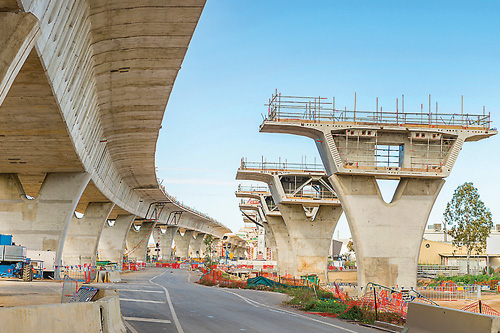Front Line: A Federal Attempt to Streamline the Permitting Process
With the realization that major infrastructure projects are critical to economic development, the federal government is attempting to streamline the environmental permitting process.
Q4 2017

In August, the President moved directly on streamlining, issuing Executive Order (EO) 13807 — “Establishing Discipline and Accountability in the Environmental Review and Permitting Process for Infrastructure Projects.” The focus is on major infrastructure, i.e., projects reviewed by multiple agencies, requiring an Environmental Impact Statement (EIS).
Some important directives include:
Deadlines: Timelines for environmental reviews and processes are to be reduced to “not more than an average of approximately 2 years.” In 2016, EIS completion took an average of 46 months, costing an average of $6 million. Within six months, the Office of Management and Budget (OMB) has to establish programmatic “CAP Goals” for “Infrastructure Permitting Modernization.” CAP goals are “cross-agency priority goals,” formally established in federal statute.
Efficiency: The EO requires a new review process called “One Federal Decision,” making just one federal agency the leader among all agencies involved.
Accountability: Going forward, personnel and agency performance plans must include “performance goals related to the completion of environmental reviews and authorizations.” Agencies must track their work within a permitting timetable that includes an alert mechanism if deadlines are missed. OMB will review agency performance and determine penalties, if necessary.
Giving the Steering Council More Control
The EO links its directives to the work of the Federal Permitting Improvement Steering Council (FPISC), established by Congress in the last federal transportation bill. The council has served more like a library, not the control tower. The EO changes that, giving the council leadership activities on a range of tasks and decision-making.
The EO-council link is additionally important because it connects friends in high places. Ohio’s Senator Rob Portman, for example, held a hearing — Cutting Through the Red Tape: Oversight of Federal Infrastructure Permitting and the Federal Permitting Improvement Steering Council — on September 7th directly focused on the FPISC and ways to make it work better. In opening comments, Senator Portman noted that on a new hydropower project, for example, a “sponsor has to brace itself for a permitting process that could last 10 years.”
First steps towards implementation started September 14th, the date by which the EO directed the Council on Environmental Quality (CEQ) to present an “initial list of actions.” CEQ focused on public involvement, agency leadership, and reliance on prior studies. CEQ will convene an inter-agency working group to identify permitting impediments. It will team up with OMB and the FPISC to develop One Federal Decision. Unfortunately, CEQ does not include a deadline for its initial work.
Streamlining is critical to economic development. Some next steps to watch for are the OMB’s proposed CAP goals, due in February 2018. In addition, there are policy proposals to allow the FPISC to assess project fees, to give the council a working budget. New fees usually draw congressional attention, presenting another opportunity for economic development officials to interact with decision-makers to help make this critical effort succeed.
Project Announcements
Australia-Based Aquatic Leisure Technologies Group Plans Opp, Alabama, Manufacturing Operations
12/11/2025
Teradyne Plans Wixom, Michigan, Robotics Operations
12/11/2025
Robinson Plans Altoona, Iowa, Manufacturing Operations
12/11/2025
BioTouch Expands Columbus, Georgia, Operations
12/11/2025
Natrion Plans Erie County, New York, Battery Components Operations
12/11/2025
Czech-Based GZ PrintPak Expands Mount Pleasant, Wisconsin, Manufacturing Operations
12/11/2025
Most Read
-
The Workforce Bottleneck in America’s Manufacturing Revival
Q4 2025
-
Rethinking Local Governments Through Consolidation and Choice
Q3 2025
-
First Person: Filter King’s Expansion Playbook
Q3 2025
-
Lead with Facts, Land the Deal
Q3 2025
-
How Canada Stays Competitive
Q3 2025
-
Investors Seek Shelter in Food-Focused Real Estate
Q3 2025
-
America’s Aerospace Reboot
Q3 2025

